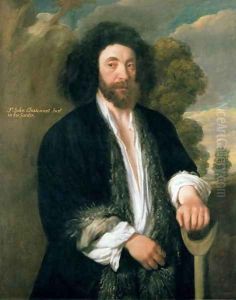Thomas de Critz Paintings
Thomas de Critz, also known as Thomas de Critz the Elder, was a notable 17th-century English painter, recognized primarily for his work as a portraitist and a serjeant-painter to the English court. Born in London in 1607, Thomas de Critz was of Flemish descent; his father, John de Critz, also served as a serjeant-painter, which was a title given to official painters of the British monarchs, responsible for the maintenance and creation of decorative elements and portraits in royal palaces.
Thomas de Critz inherited the role of serjeant-painter from his father in 1644, during the reign of King Charles I. His tenure continued through the turmoil of the English Civil War and into the period of the Commonwealth under Oliver Cromwell. Despite the political upheavals, de Critz managed to retain his position and worked for both the royal family and the Cromwellian government, demonstrating his ability to adapt to the changing times.
De Critz's work followed the Jacobean style of portraiture, which was characterized by a strong emphasis on detail and a certain stiffness in the depiction of figures. While not as famous as his contemporaries, such as Anthony van Dyck, who had a significant influence on English portraiture, de Critz's work remains an important part of the visual historical record of the period. His portraits often depicted nobility and members of the court, and his style is noted for its realism and attention to the textures of fabrics and materials.
Unfortunately, few of de Critz's works have been firmly attributed to him, as many paintings from the period were not signed, and attributions have been complicated by the presence of several other artists with similar names, including his nephew, John de Critz the Younger. Thomas de Critz died in 1653, leaving behind a legacy that has been somewhat overshadowed by the larger figures of the era but is nonetheless an integral part of the study of 17th-century British art.
